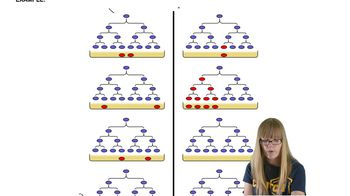Here are the essential concepts you must grasp in order to answer the question correctly.
DNA Repair Mechanisms
DNA repair mechanisms are cellular processes that identify and correct damage or errors in the DNA sequence. These include pathways like base excision repair, nucleotide excision repair, and mismatch repair, which maintain genetic stability by fixing spontaneous or induced mutations before they become permanent.
Recommended video:
Mutation Detection and Correction Evidence
Experimental evidence for DNA repair includes increased mutation rates in repair-deficient mutants, observation of repair enzyme activity, and molecular assays showing removal of damaged bases. These findings demonstrate that cells actively detect and correct most mutations, preventing their accumulation.
Recommended video:
Spontaneous vs. Induced Mutations
Spontaneous mutations arise naturally from DNA replication errors or chemical changes, while induced mutations result from external agents like UV light or chemicals. DNA repair systems are adapted to recognize and fix both types, highlighting their role in protecting genome integrity under various conditions.
Recommended video:

 Verified step by step guidance
Verified step by step guidance


